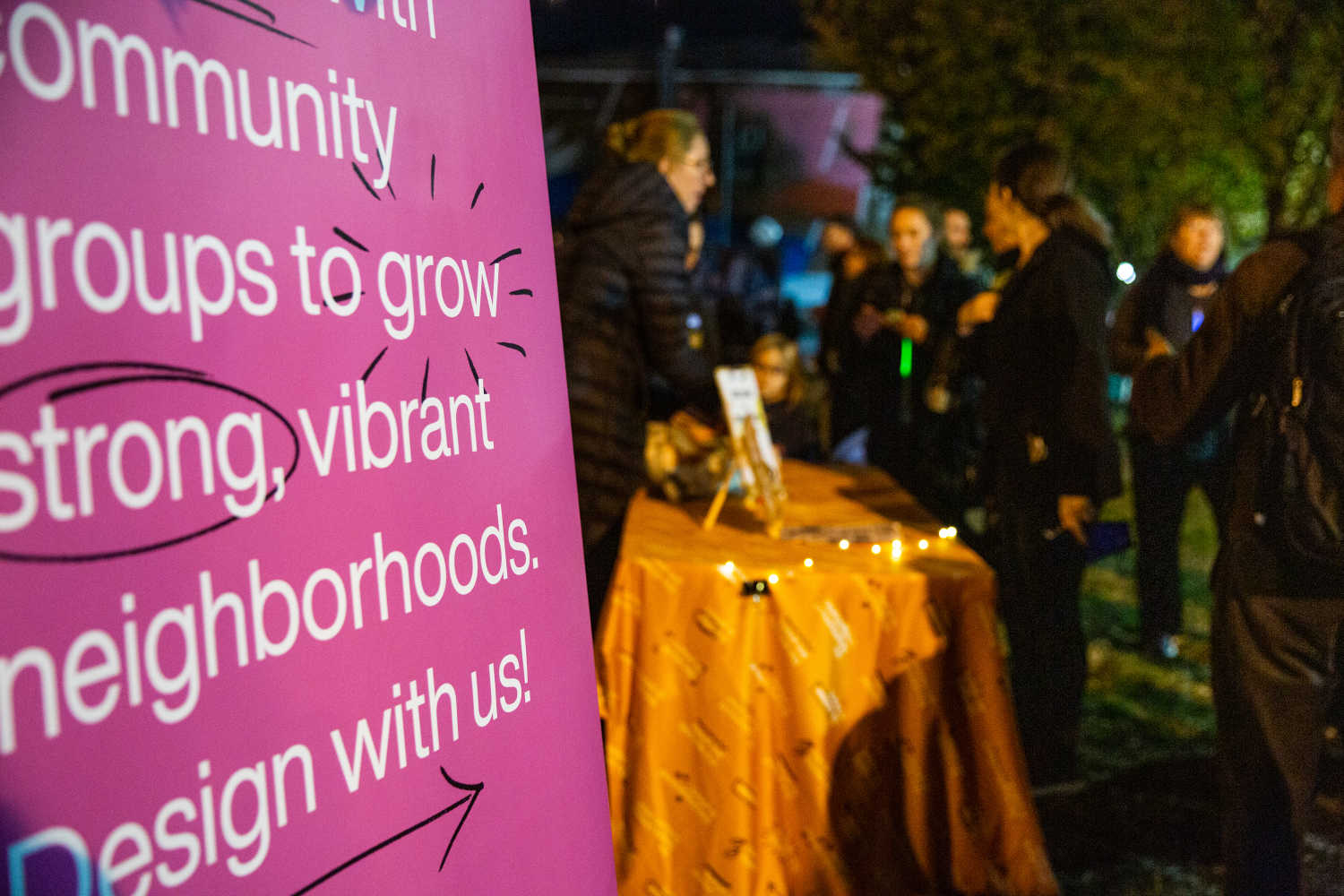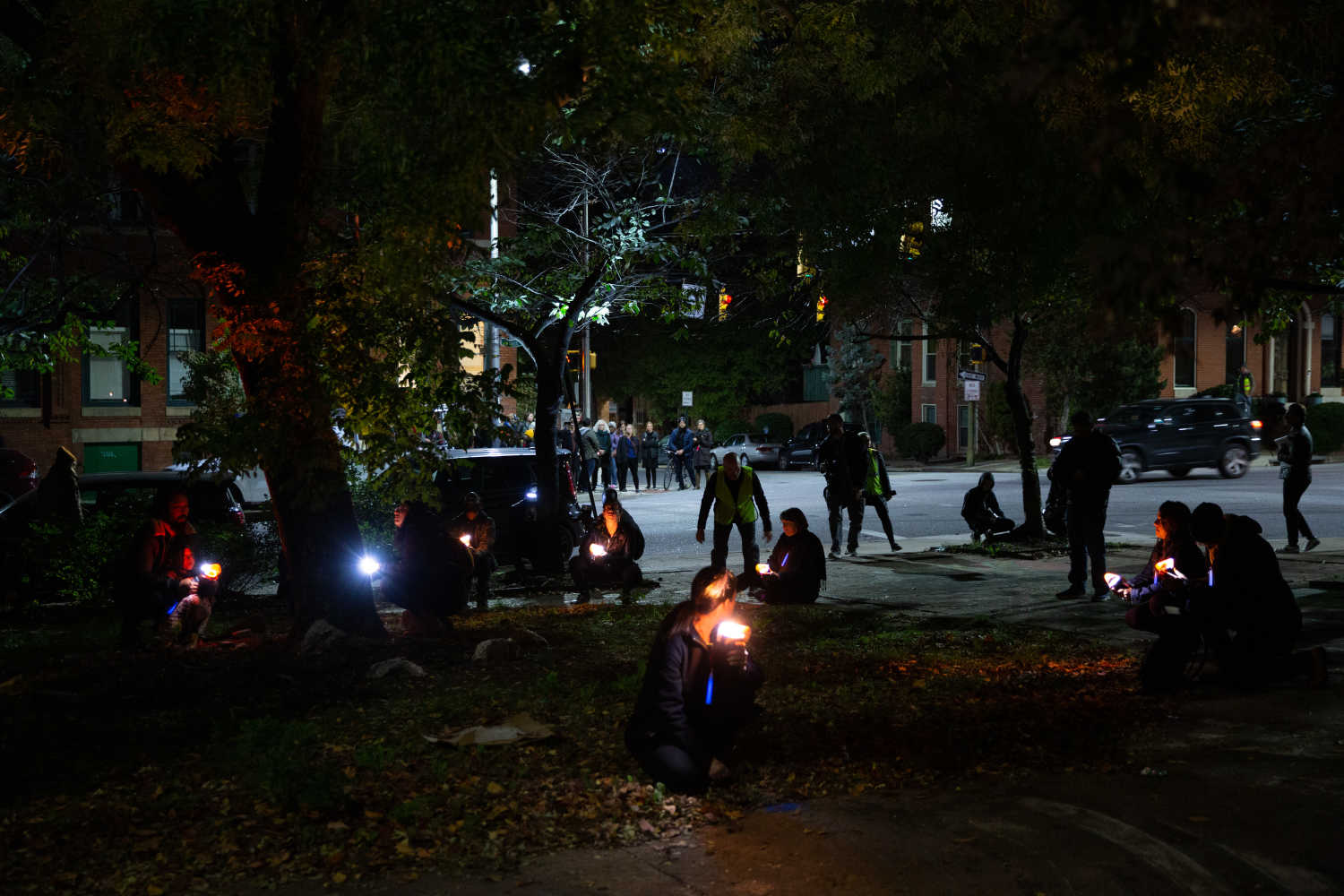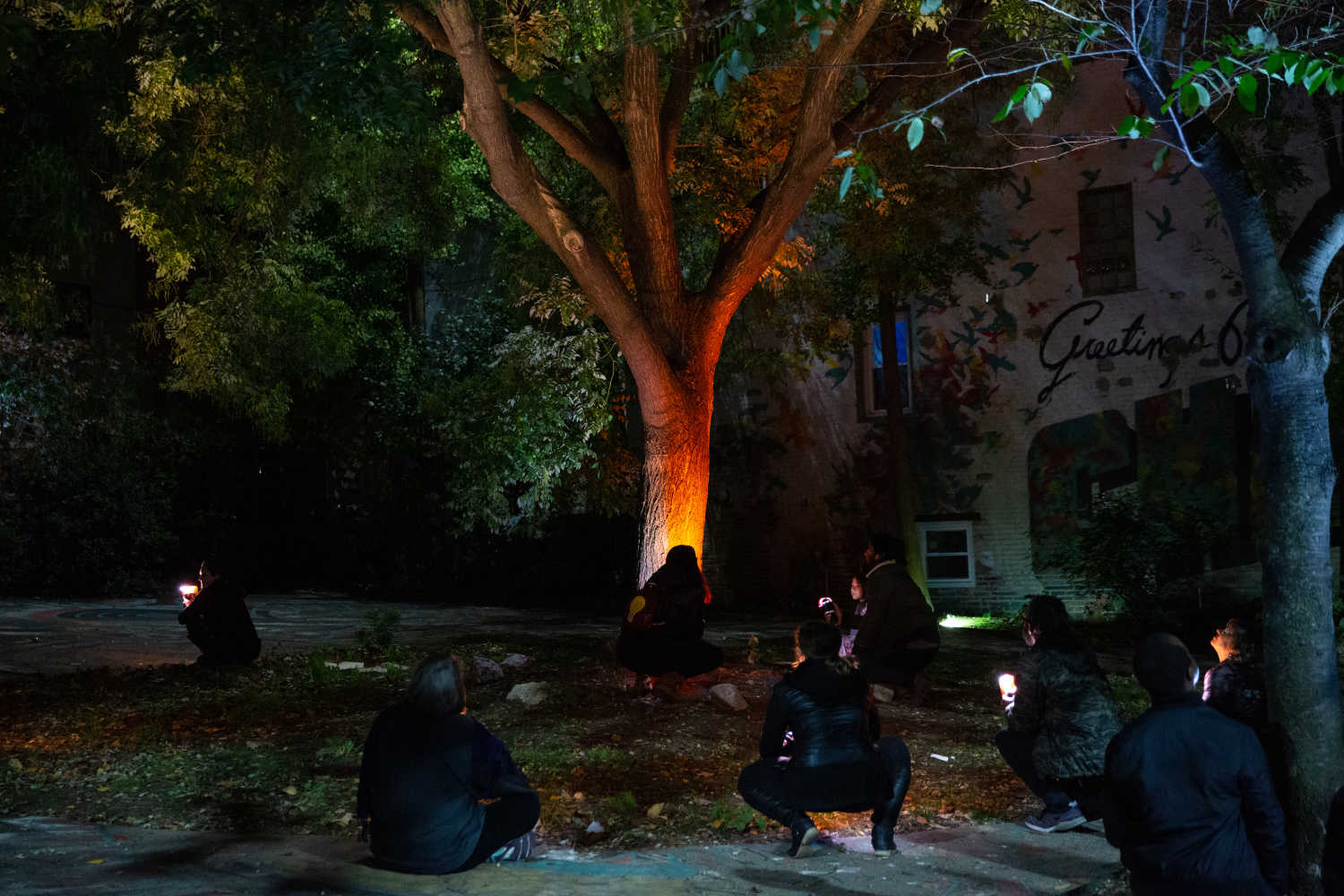Events
September 24, 2021Signal Station North is Here

At base, neighborhood lighting serves a simple purpose; to provide visibility in the dark.
Yet for the last two years, Neighborhood Design Center has worked to delve deeper into the many layers and functions of light through the Signal Station North project, a National Endowment for the Arts Our Town Grant and Central-Baltimore Partnership-supported effort to develop a lighting plan for the Station North Arts District in Baltimore City. Using community listening and analysis as the foundation, Neighborhood Design Center designed a plan that goes beyond using light as a functional means to provide visibility to consider the ways that what we choose to illuminate and our method of doing so can unite and divide, build social interaction and community and determine what is prioritized in our neighborhoods.








After decades of hearing communities express the need for planning around lighting. Neighborhood Design Center kicked off the project in 2019 by bringing together staff members, stakeholders and local artists and designers to discuss goals for the community listening process. The core group helped develop a data collection tool to gather community input, which included those who live and work in Station North and those who pass through Station North as pedestrians, bikers or on public transportation and those who come to the district for business or services.
Through public community meetings, phone calls and Zoom sessions (after Covid-19 derailed additional in-person group meeting plans), and knocking on doors to get input, Neighborhood Design Center identified several community values that would underlie the lighting plan conceptual framework. Zines designed by Ruby Waldo about the project were distributed throughout the area and provided a low barrier of entry for the community to engage. Participants expressed needs well beyond the current approach, prioritizing security and lighting the street even to the detriment of those who live in the neighborhood.
Among other concerns, they expressed a desire for lighting that supports pedestrian use over vehicles, encourages community gathering, connects neighborhoods and supports arts and creativity.

Working with designers from FLUX studios, PI.KL studio, and Public Mechanics, the Neighborhood Design Center developed a framework that balances the need for light as a utility to provide visibility and safety with the desire to reflect the more abstract concepts of supporting a sense of place and identity. The resulting PATH and PLACE framework brings together a series of repeated light elements that establish relationships across the district (PATH) with neighborhood locations activated through light (PLACE). Illumination of murals and architecture, street light sidekicks to dim excessive light and provide pedestrian-friendly lighting and illuminated “ghost stoops” to both light areas where row homes once stood and encourage community gathering are among the recommendations within the framework.
Local artist April Danielle Lewis served as a collaborator and guest artist leading a portion of the community listening process. Having participated in Light City in 2016 and working as an artist in residence in the greater Mondawmin community exploring light, April has a strong background in light’s many uses, but her involvement also extends as part of the Station North community; April’s studio is at Openworks, and she experiences the effect of light, and its absence, in the neighborhood when running through as part of an area running club.
April was very intentional about engaging with residents to get their input and was also pleased by the level of participation.
“Knocking on someone’s door to talk about their feelings about light is vulnerable,” said April. “I was pleasantly surprised by the engagement and receptiveness. Everyone wanted to talk.”

April is also host of the We’re Here event, a visibility walk and party to celebrate the project that takes place on Friday, September 24.
In preparation for the event, she asked participants how they see themselves and want to be seen. Participants used these descriptions to create t-shirts out of reflective materials that they will wear the night of the walk to light up the night with affirmations about themselves. She hopes that they continue to wear the shirts long after the event is over.
“It’s a way of asking to be seen in the physical place and presence but also to be seen in terms of humanity,” says April. “They’re demanding visibility in the physical space but also visibility around who they are.”
Explore the Guidebook and Plan
Explore the Signal Station North Neighborhood Lighting Guidebook and a District Lighting Plan.
Inviting Light
Throughout 2025, NDC was part of the collaborative team behind an innovative public art project taking place in the Station North Arts District. Learn more about “Inviting Light.”